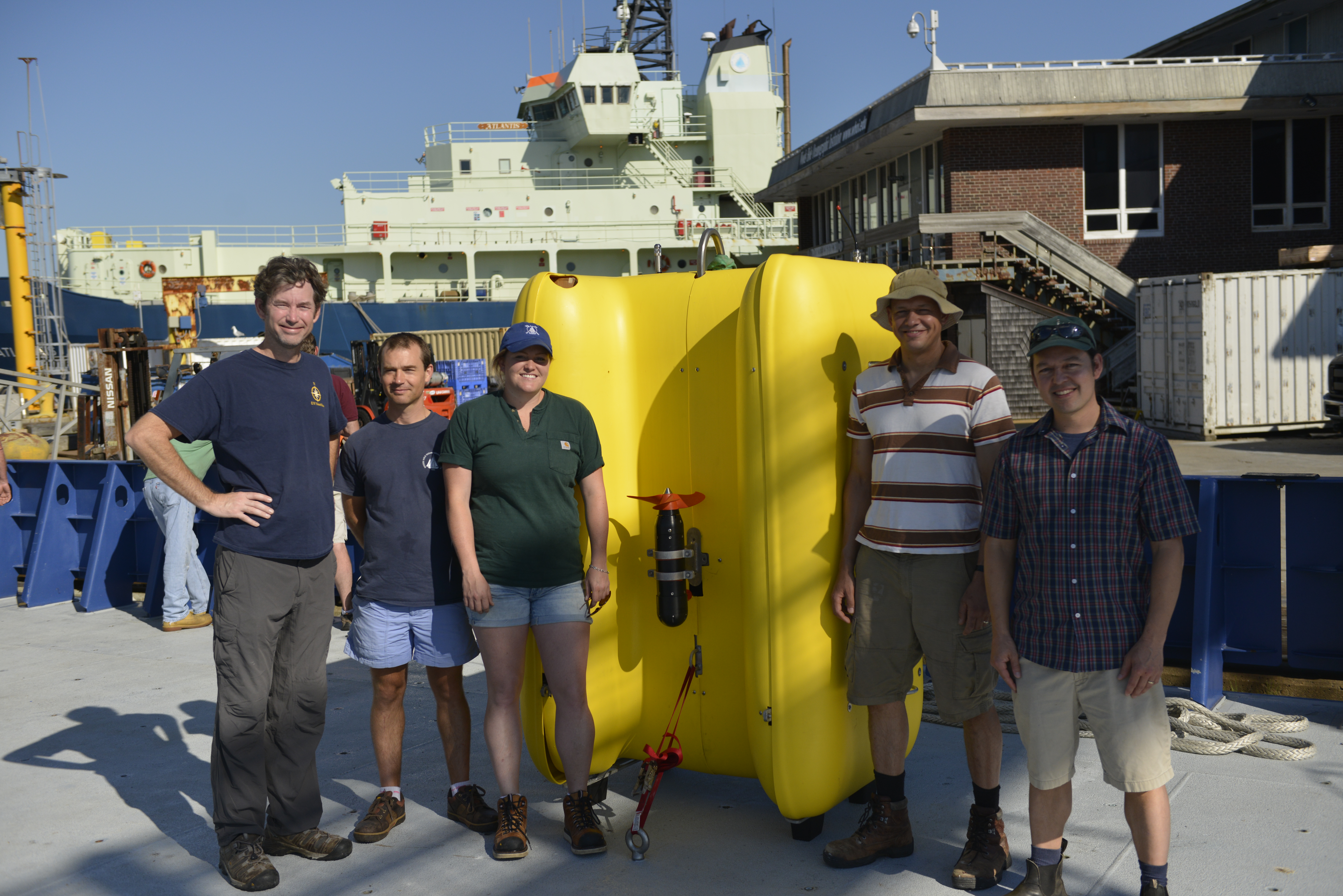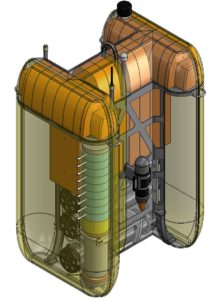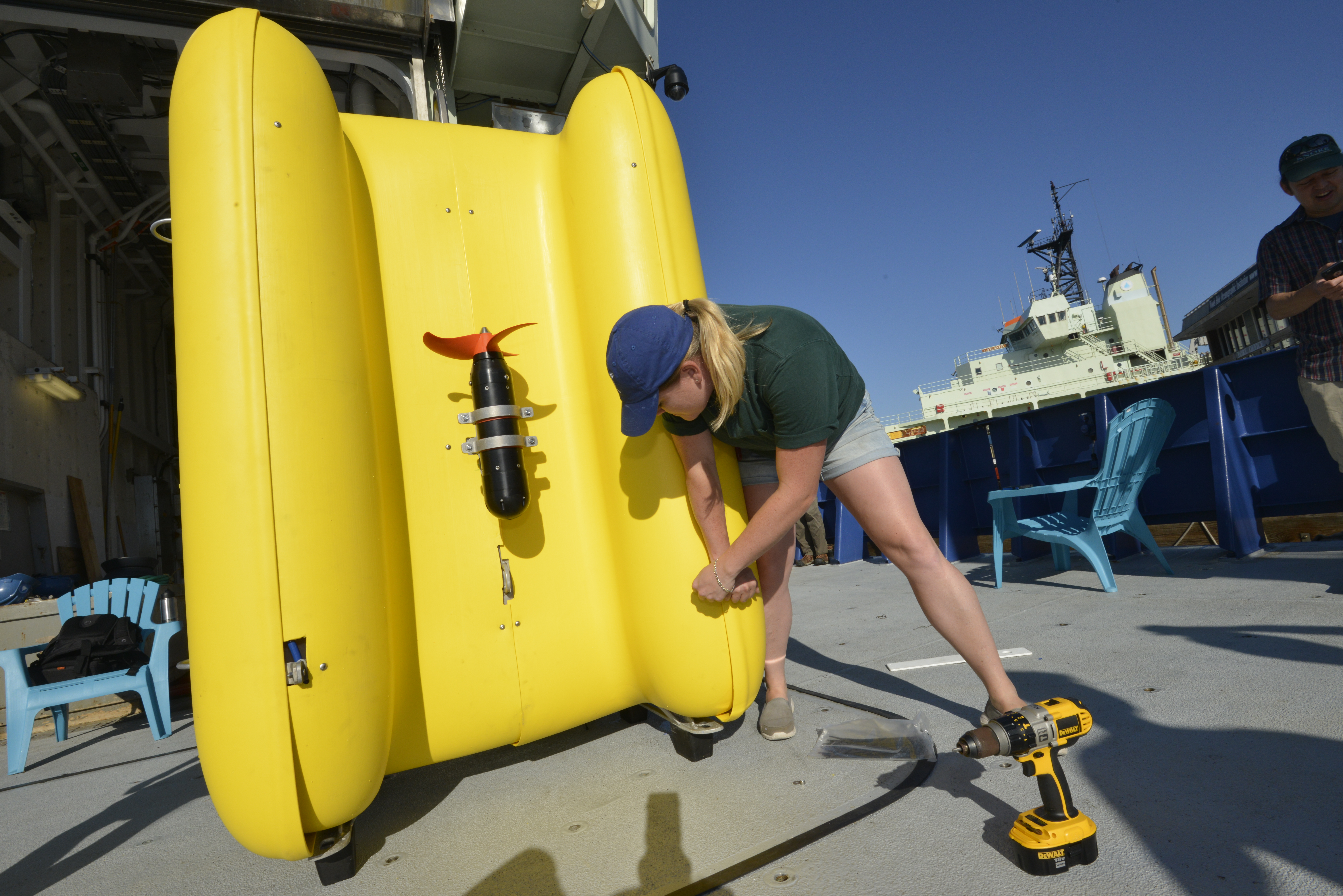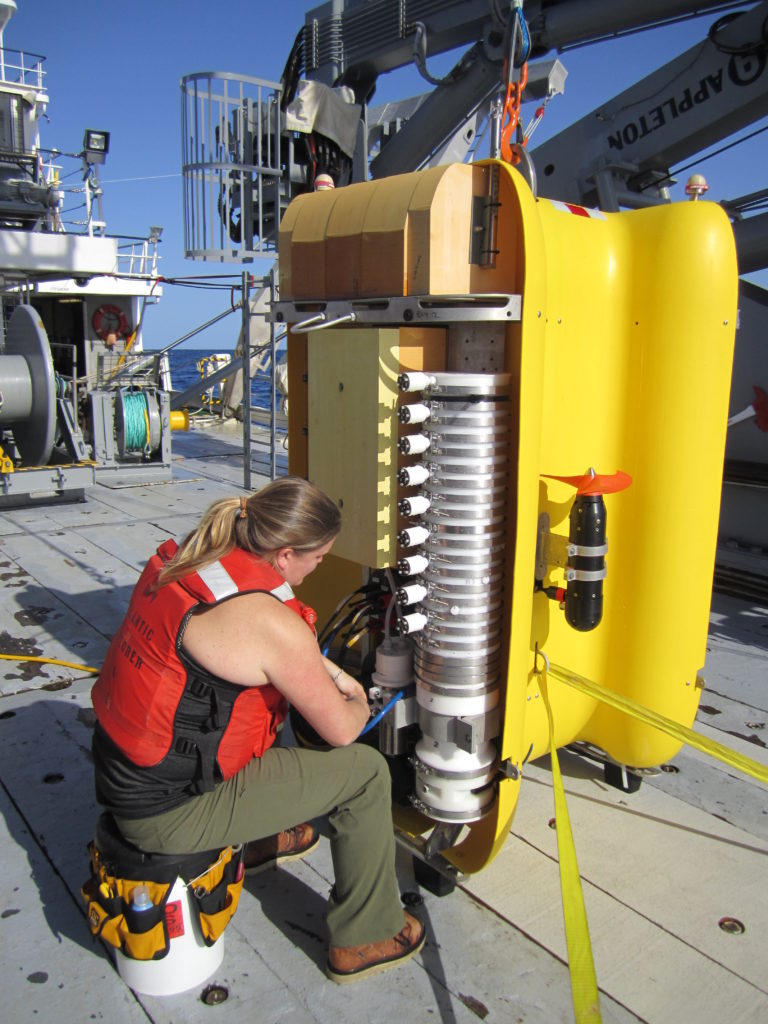Clio: Autonomous Underwater Vehicle
My involvement with the design of the vertical profiling autonomous underwater vehicle (AUV) “Clio” intensified after our successful testing of the new SUPR sampler in the Marshall Islands. Prior to our Marshall Islands cruise, Dr. Jakuba, Dr. Breier and I had been meeting weekly to discuss a variety of possible vehicle layouts and arrangements (a), and Dr. Jakuba performed numerous hydrodynamic simulations to determine the best shape for stability and efficiency as an AUV, given the specific constraints of the SUPR sampler. Thus, as I began working on the design of the vehicle itself, an overall shape and size for the AUV had been predetermined and the exterior “skin” dimensions were nearly finalized. My first task was to design the vehicle’s frame, or its “skeleton” to fit inside of the skins and support all of the internal components. I had to design and constrain all of the sub-systems; electronics housings, samplers, thrusters, floatation, and navigational instruments inside of the predetermined dimensions of the AUV. The final frame weldments that I modeled evolved to be very unique given the restrictions dictated by its final external configuration. I also was tasked with performing a trade study to determine our best course of action with regards to the vehicle’s buoyancy, and was then put in charge of specifying, purchasing, and overseeing fabrication and appropriate testing of the vehicle’s syntactic foam.
Once I had a complete frame designed, Dr. Jakuba and I enlisted the help of Jason Kapit to do a finite element analysis on the frame to ensure it would be strong enough to withstand the expected conditions during operations, as well as during launch and recovery of the vehicle. Upon completion of the analysis, I led a critical design review of the mechanical systems, while Dr. Jakuba presented the proposed operational techniques and sampling methodologies (b). The review was attended by several other submersible operations managers and technicians with the goal of identifying any potential problems or weaknesses we might have in our planned operations and the design of the vehicle. A few minor changes were suggested which I incorporated into a final assembly model of the complete vehicle. I then developed the mechanical drawings (c) and oversaw the fabrication and welding of the main frame structure and all sub-systems at the WHOI mechanical shop in Iselin. Several months later, Dr. Jakuba and I assembled the AUV and brought it to the WHOI dock for testing in the deep-water access well (d). After satisfactory dockside testing, the AUV operations team consisting of Dr. Jakuba, Daniel Gomez-Ibanez, and I mobilized Clio aboard the R/V Neil Armstrong and performed at-sea testing of the vehicle in open ocean water near the WHOI OOI Pioneer Array site (e). Our July 2017 tests culminated in a final successful seven-hour dive to 2000 meters, during which the new SUPR sampler collected over 1000 liters of water from nine different ocean depths (f).
As of April 2018, Clio has been at the Bermuda Institute of Ocean Sciences and has been deployed on several scientific missions during this year. These research cruises have been led by Dr. Mak Saito along with Dr. Breier and Dr. Jakuba. I was able to participate in the first cruise in April of this year, but scheduling conflicts precluded me from participating in the second cruise in June. During the first cruise, Dr. Jakuba and I were the only two vehicle operations team members on the ship. I led all mechanical and deck operations and coordinated with the scientific personnel to prepare and deliver the SUPR samples before and after each dive, while Dr. Jakuba was in charge of programming the individual dive missions, processing the data, and coordinating the vehicle’s launch and recovery (g). The experience of such a small operations team has been highly beneficial in recent months as I have been designing and deploying a new oceanographic vehicle, tethered and towed behind a ship to explore the vast mesopelagic region.



